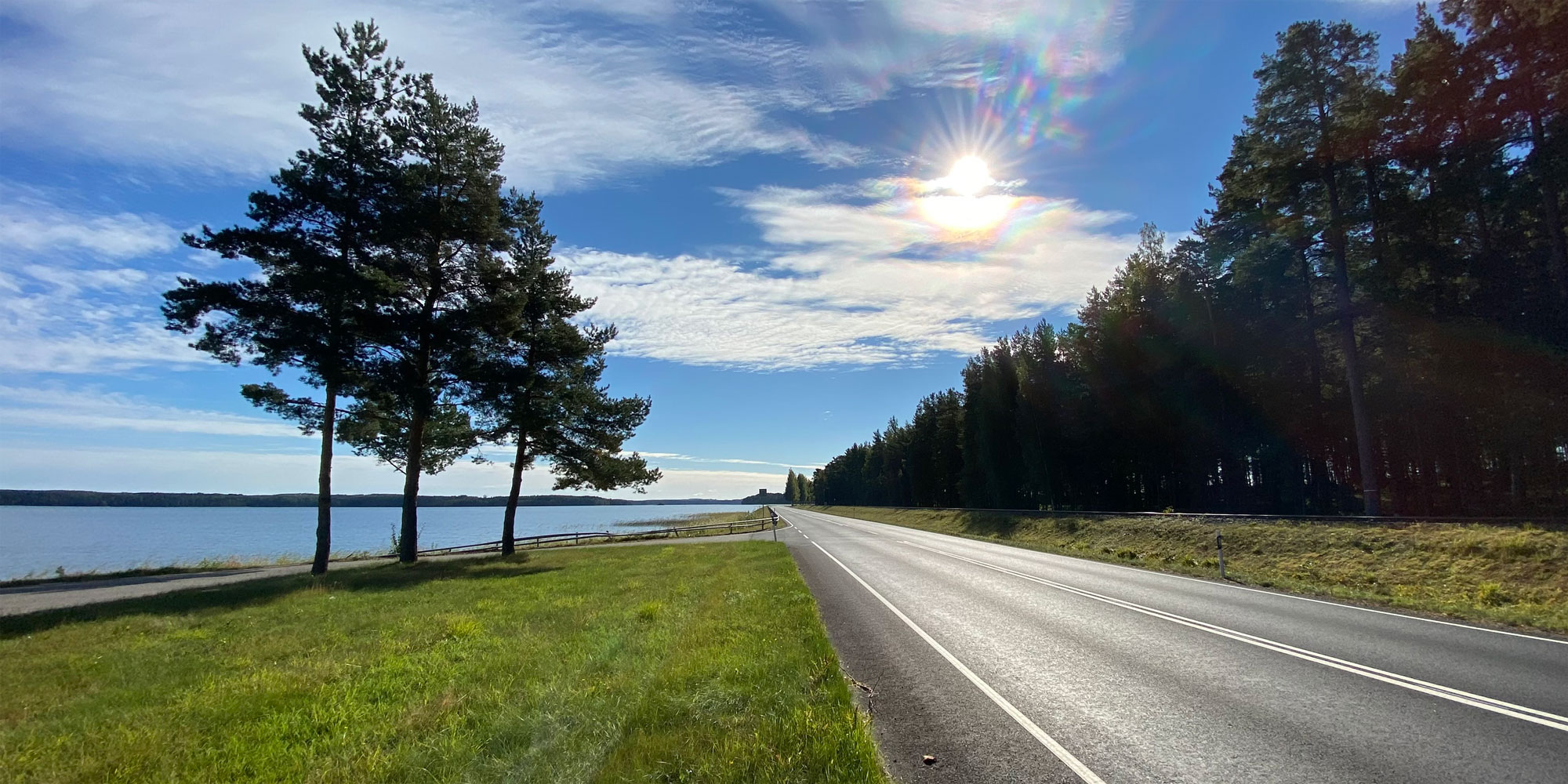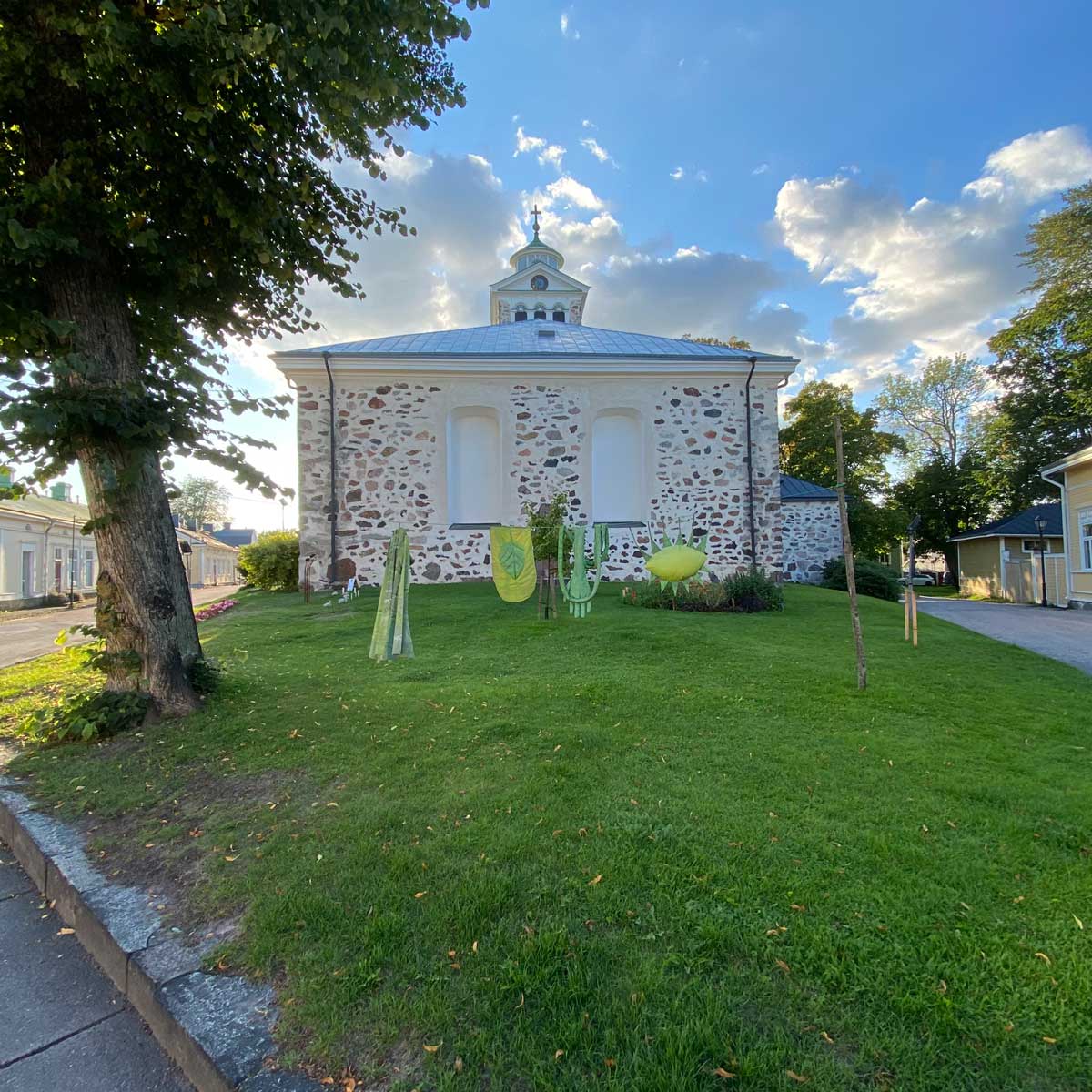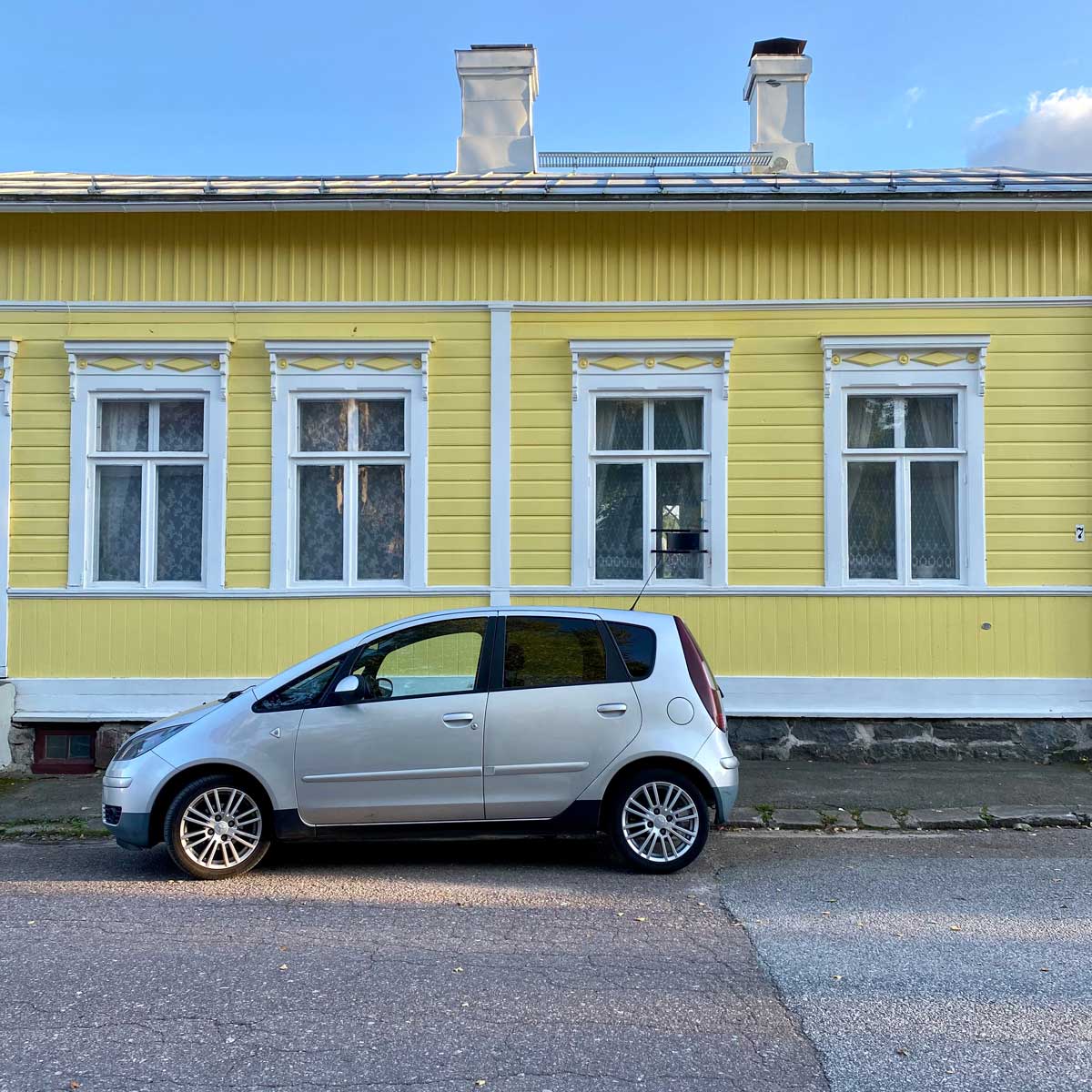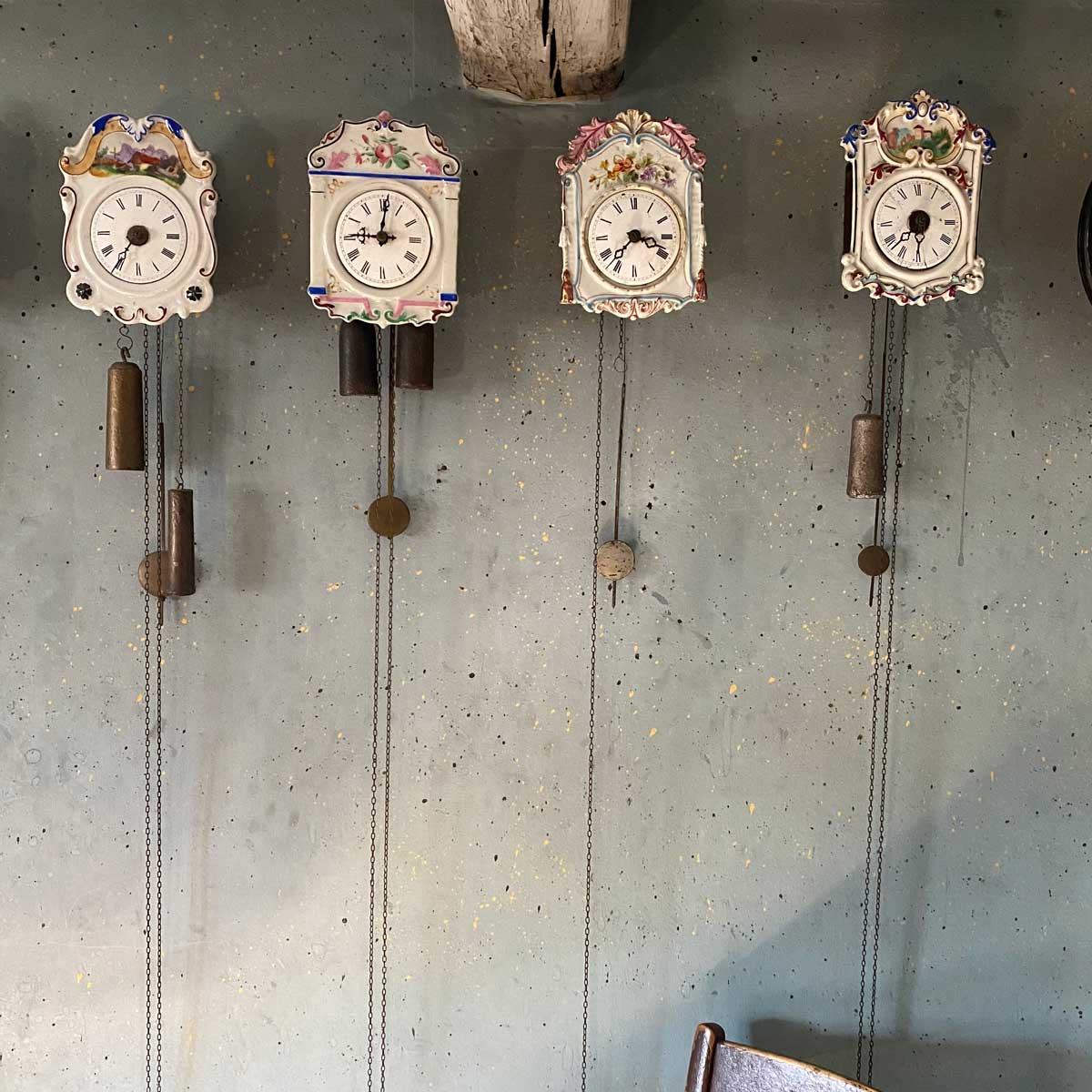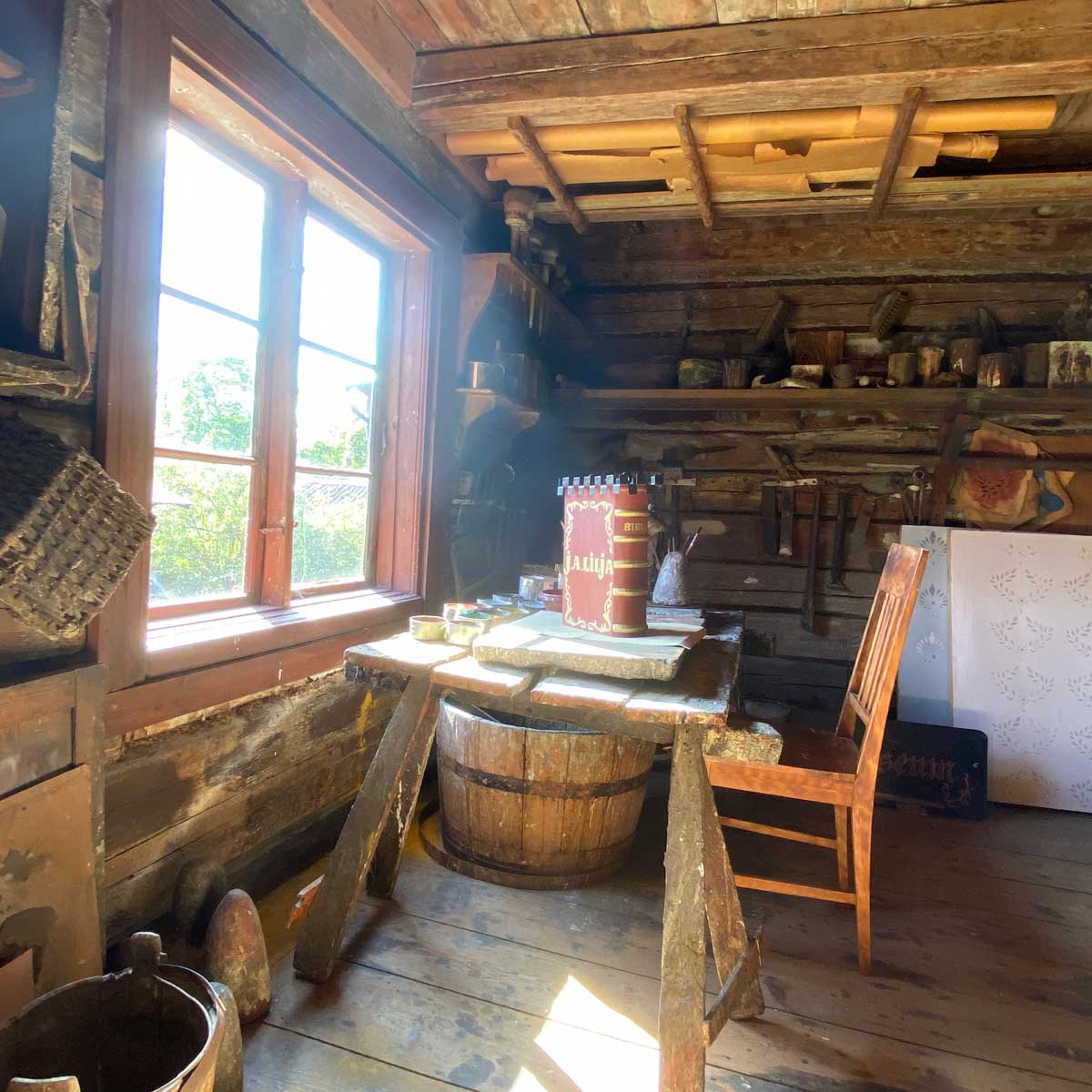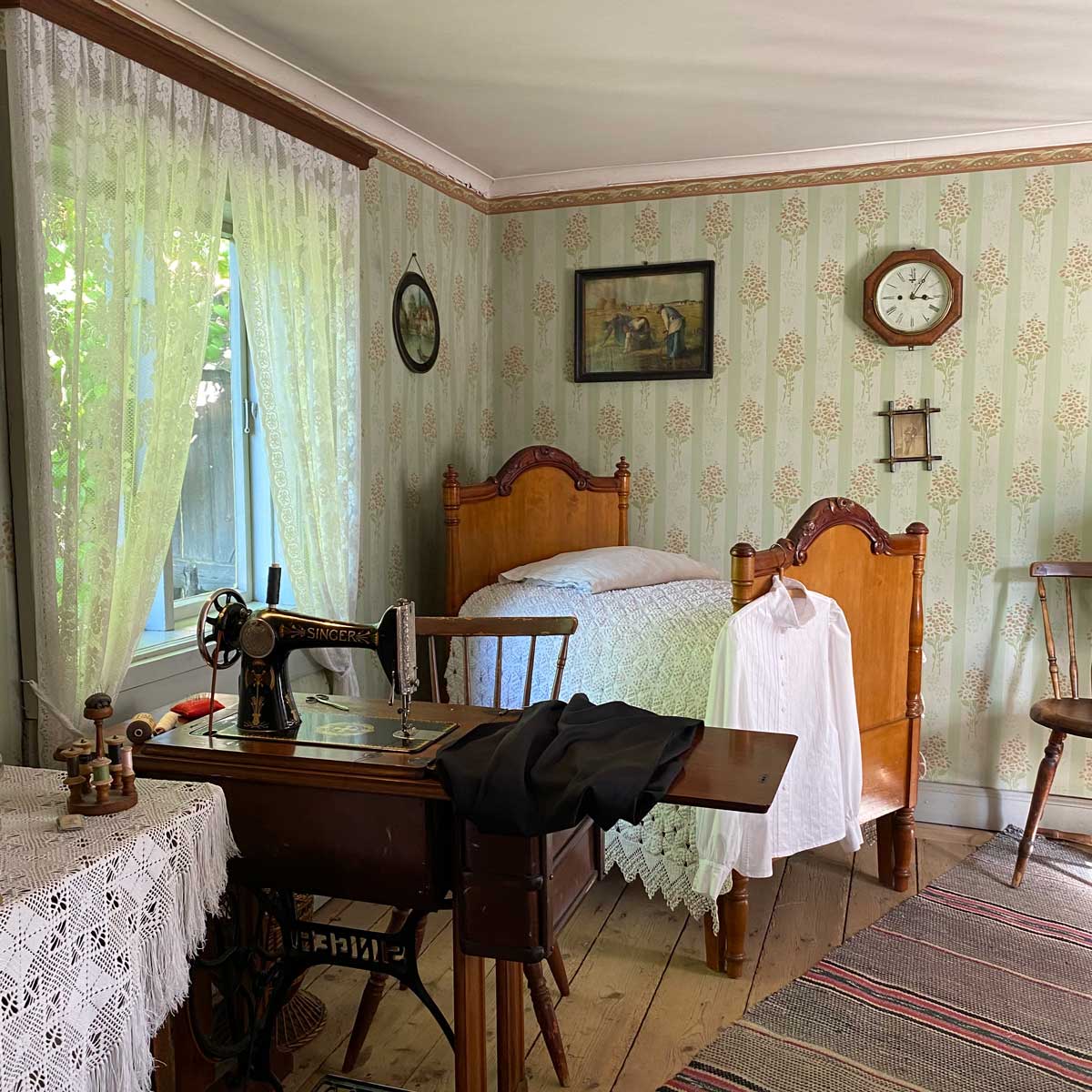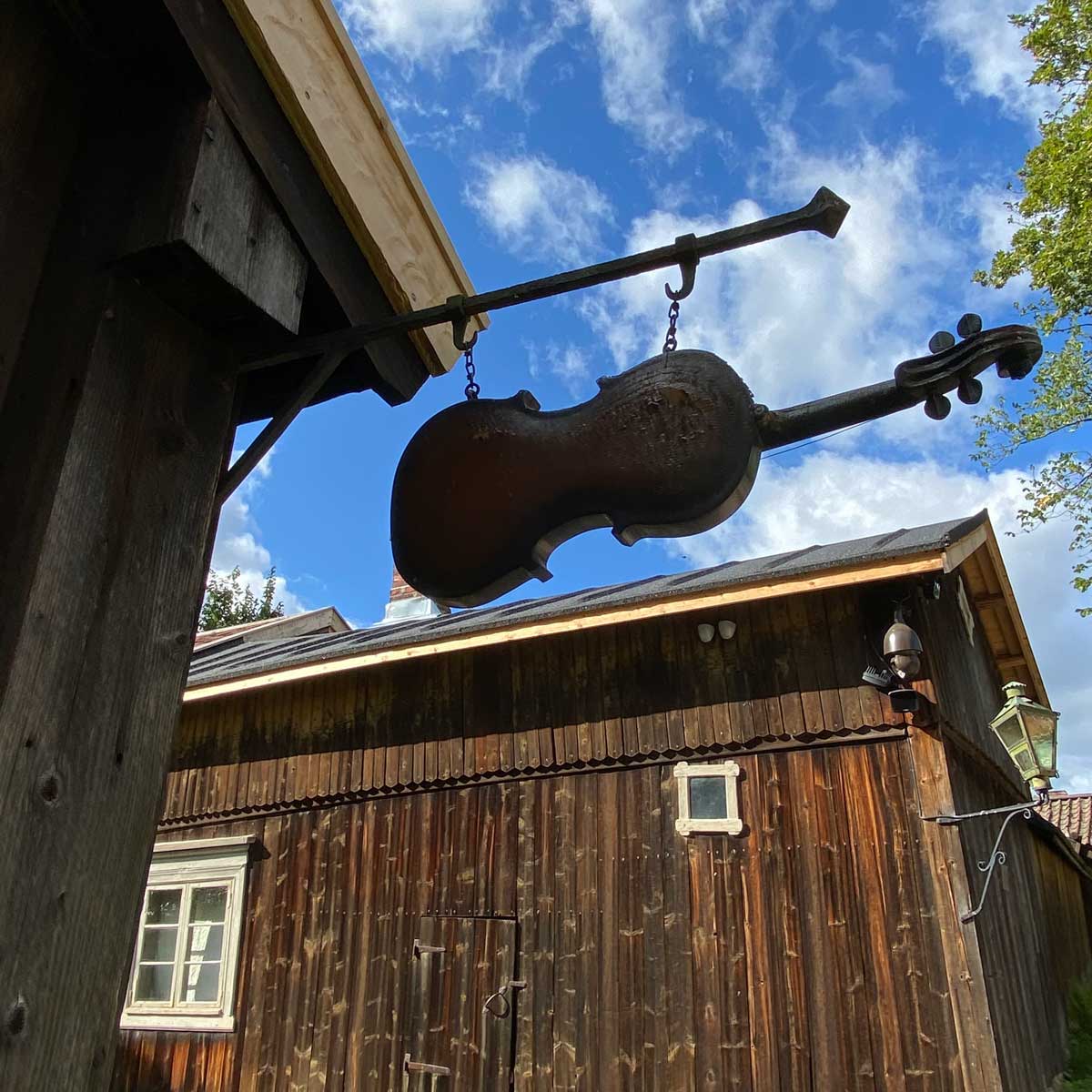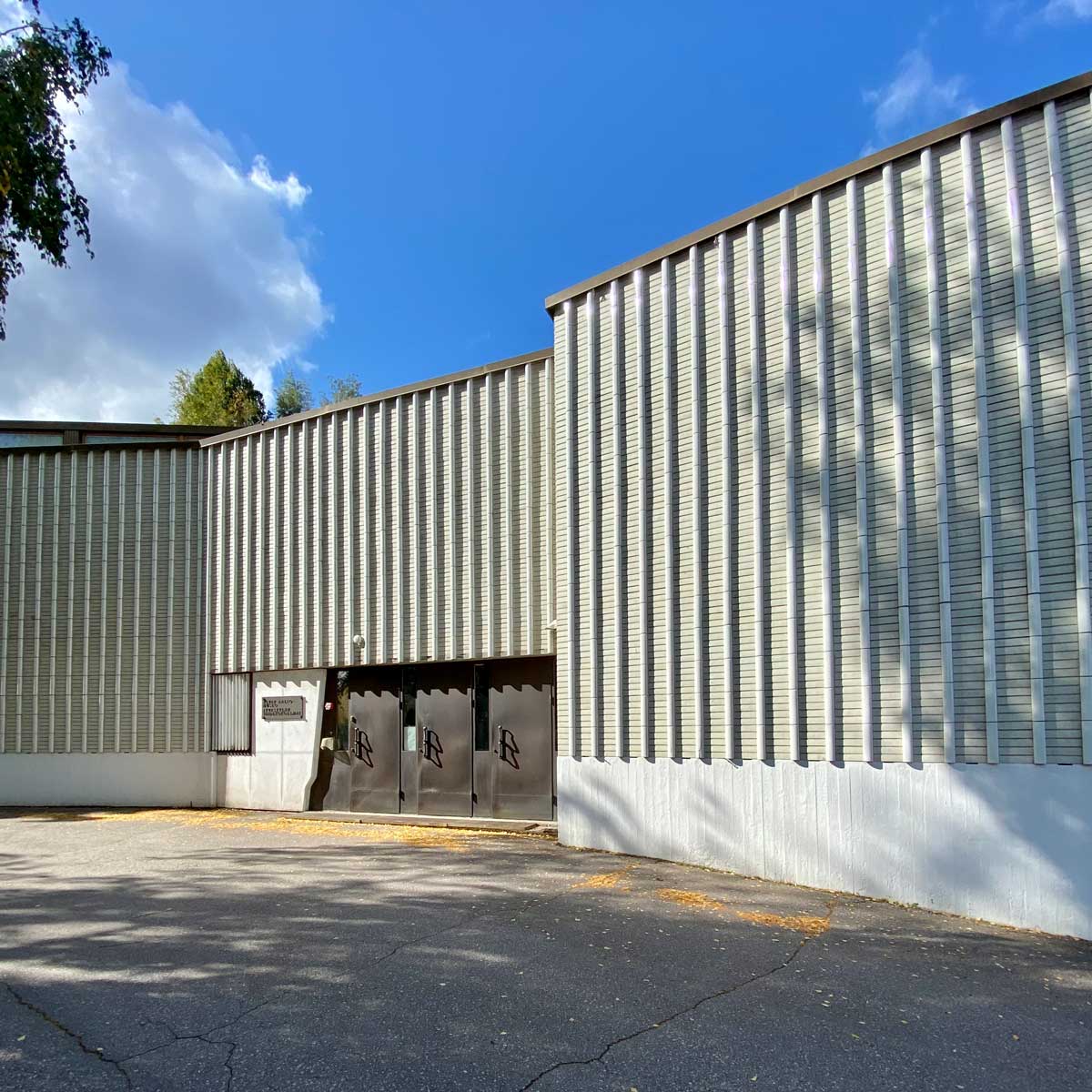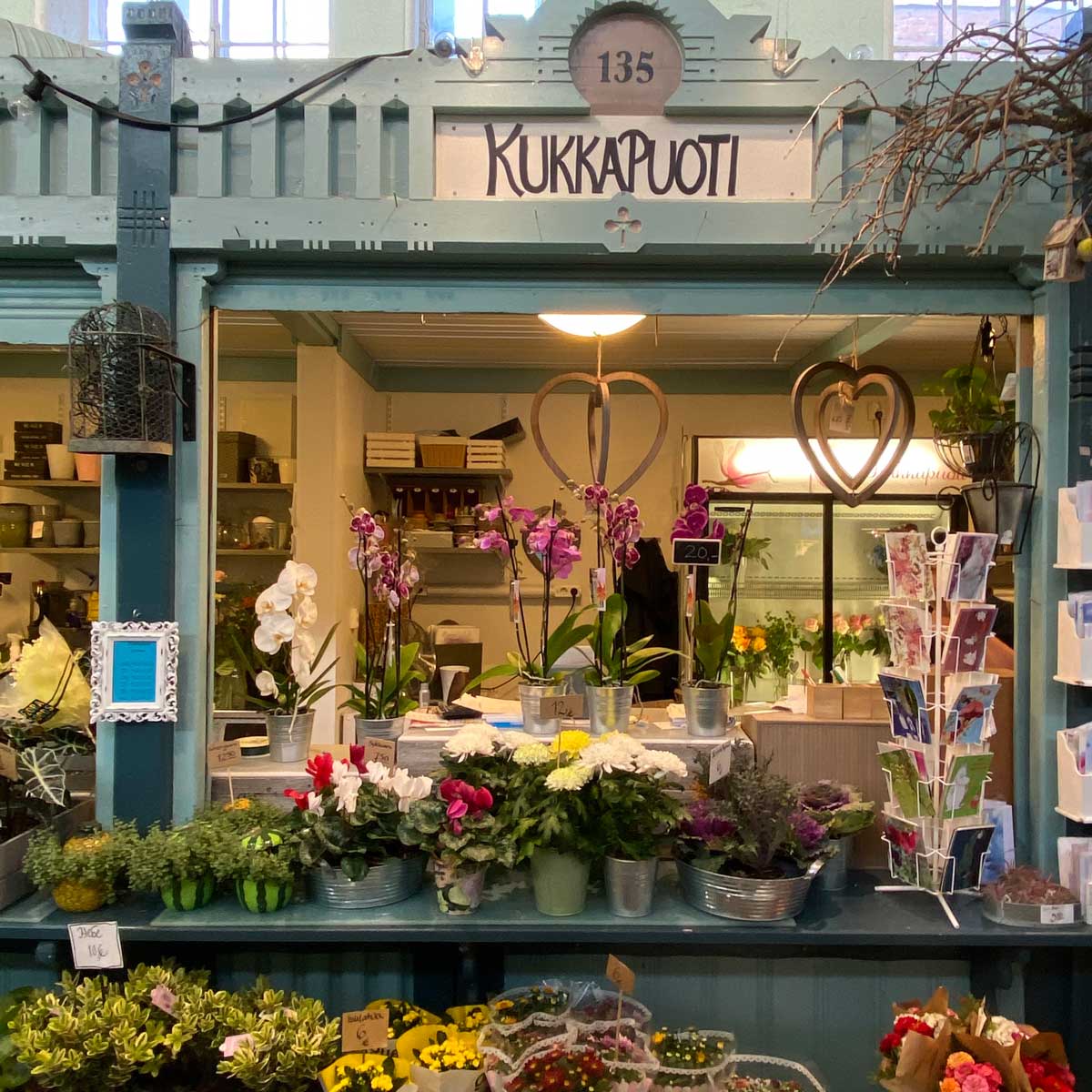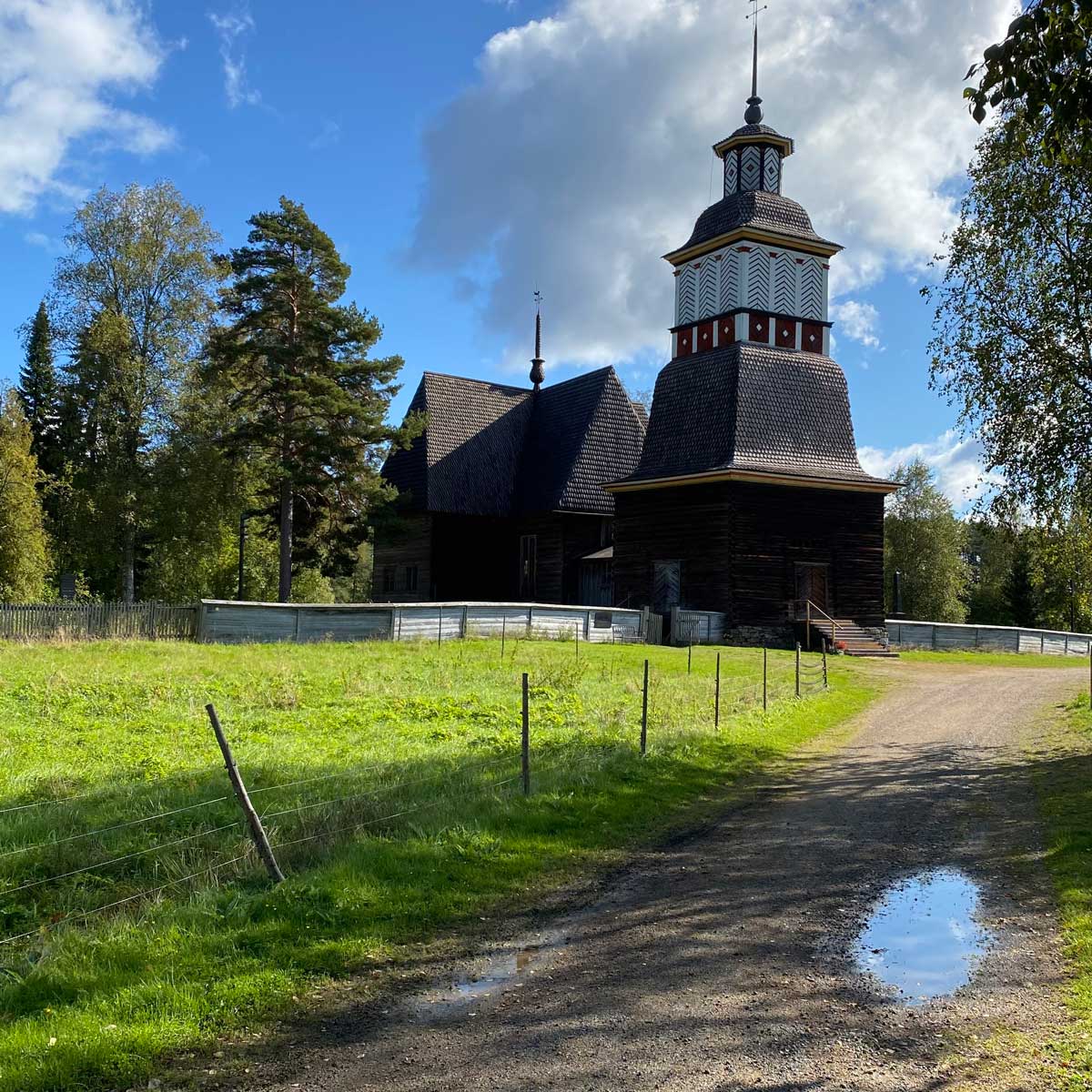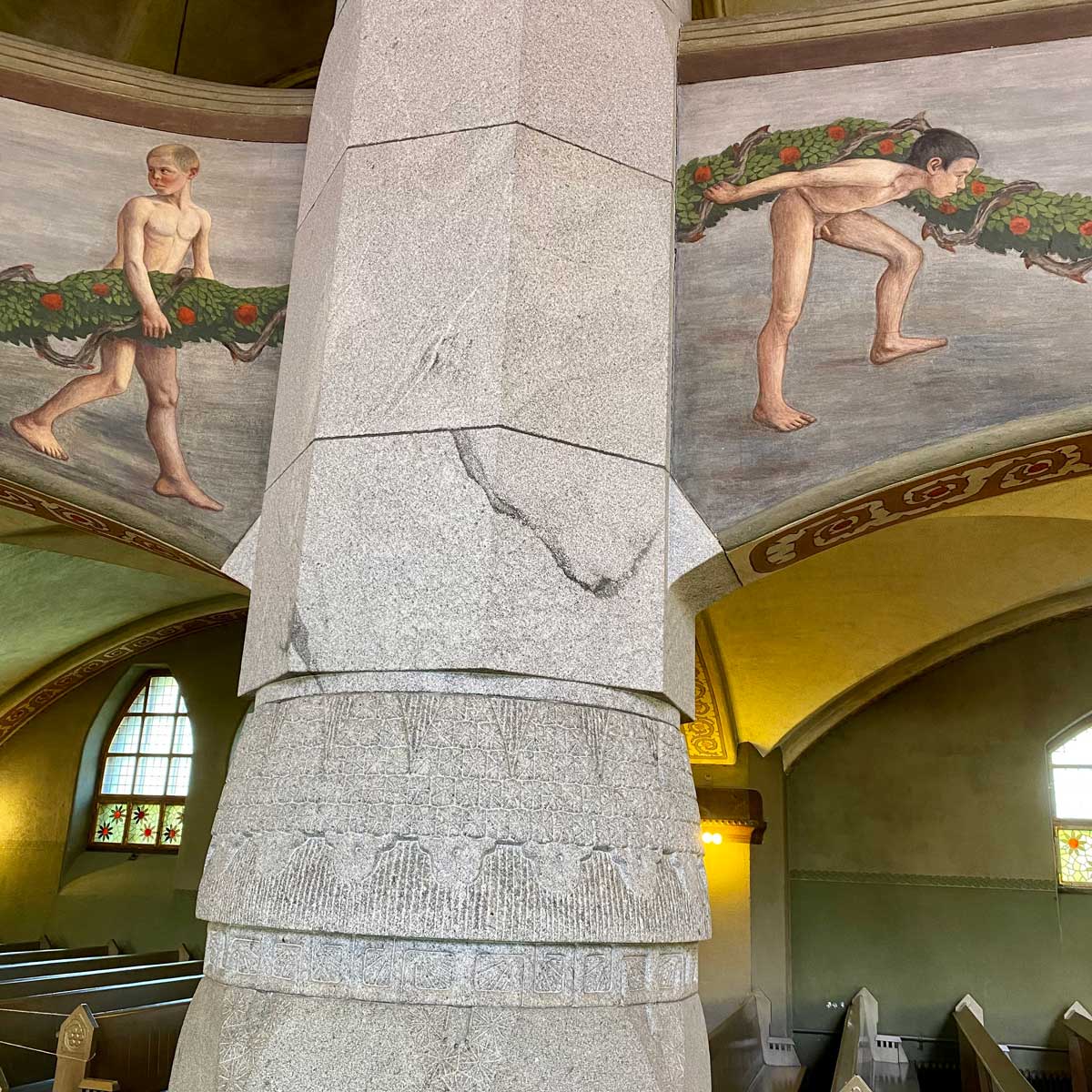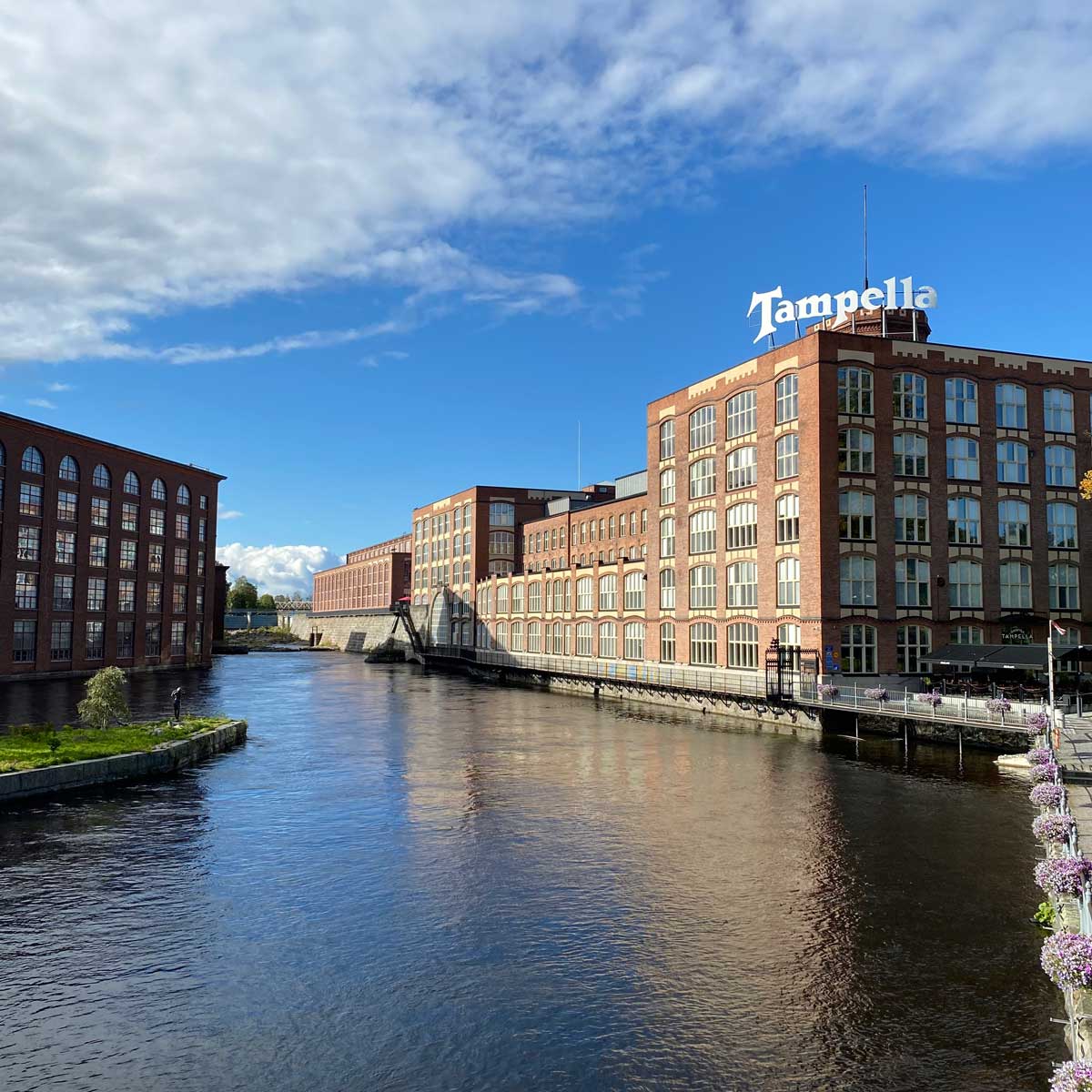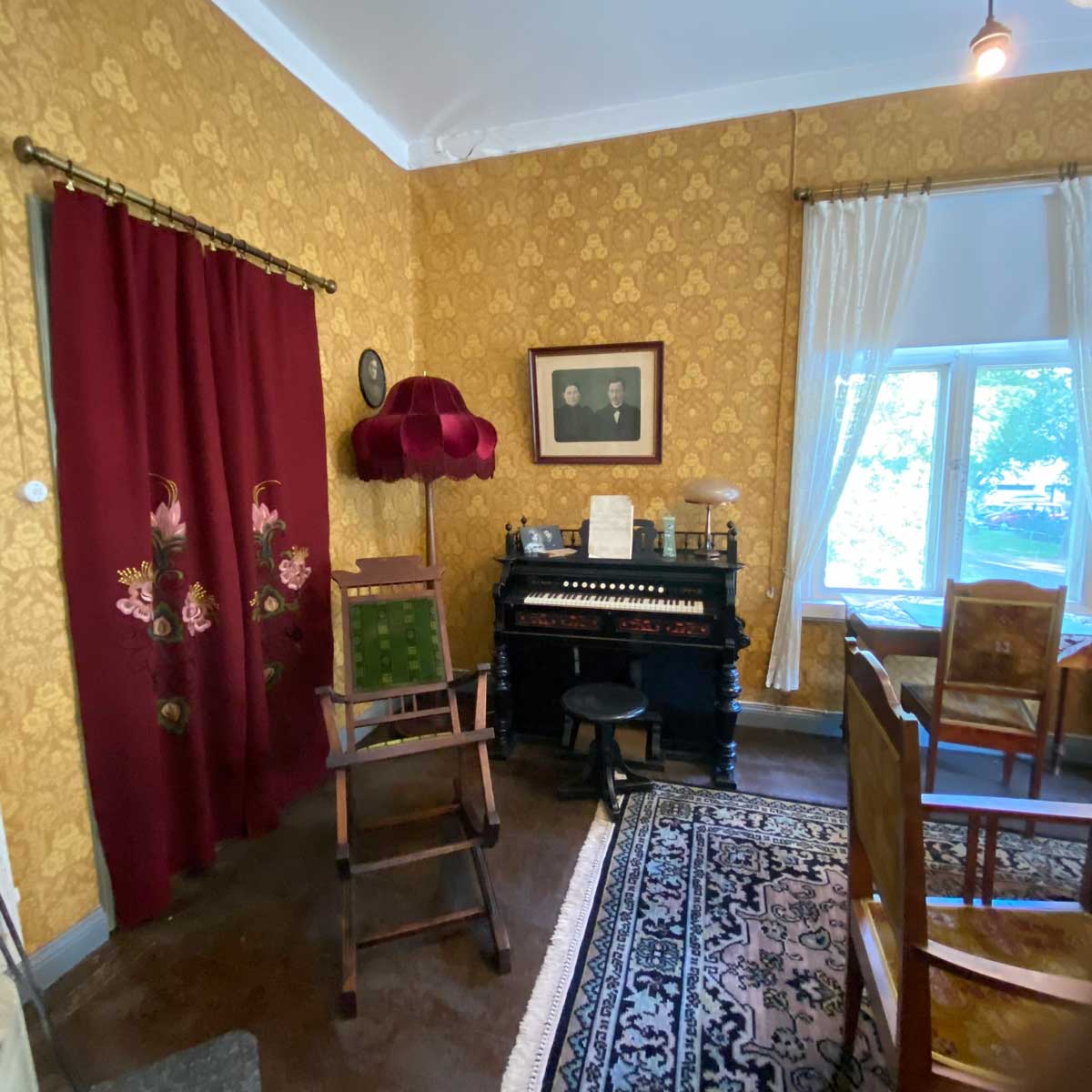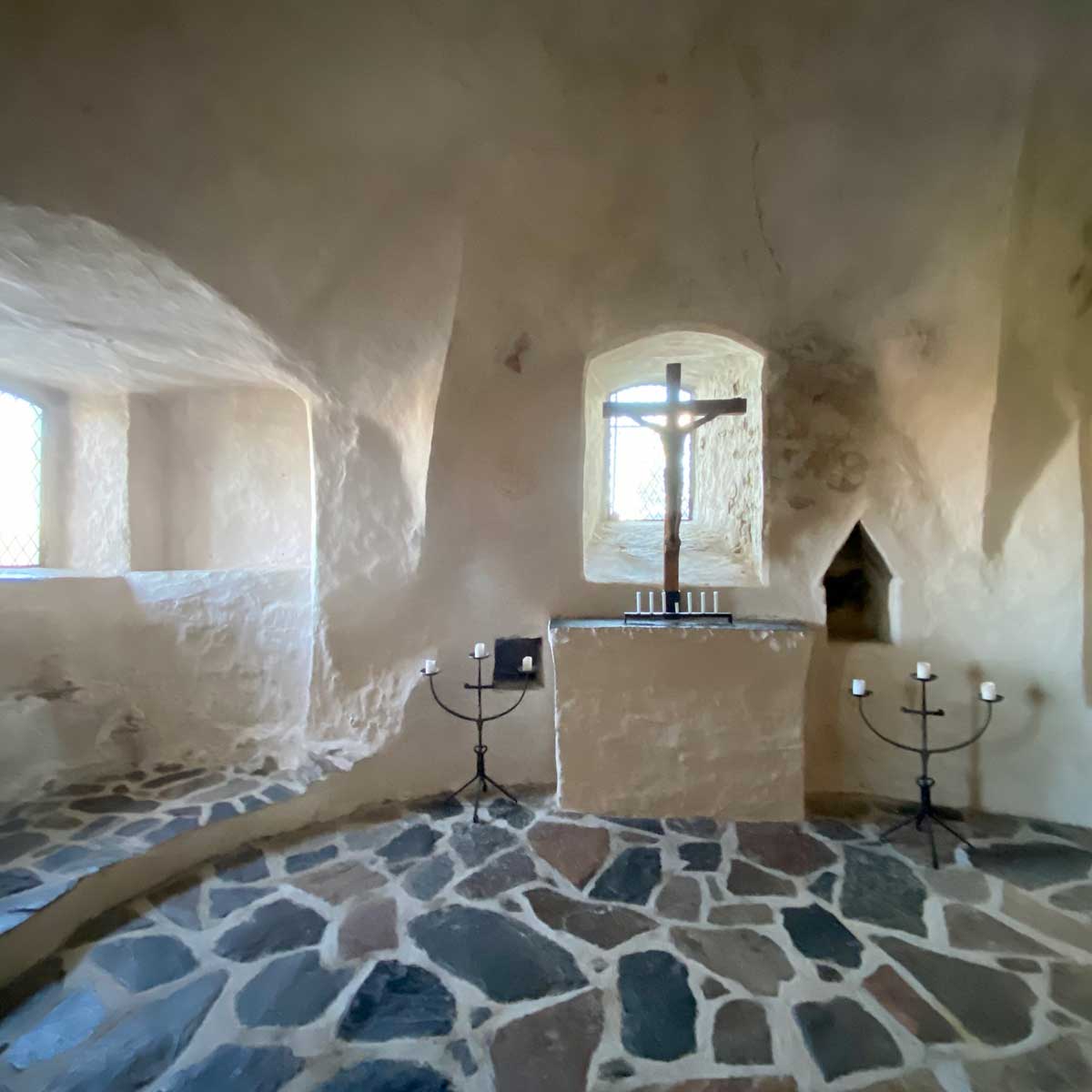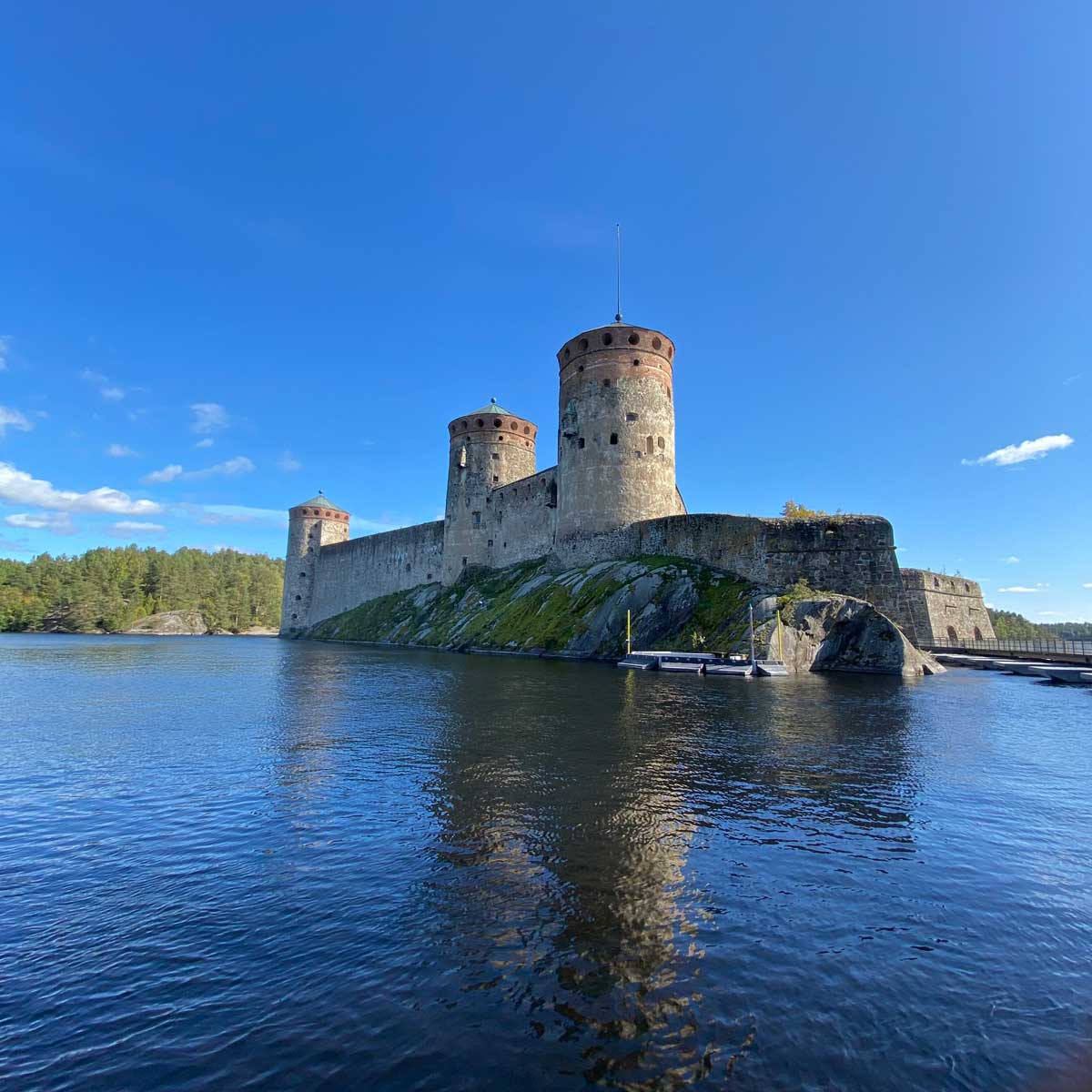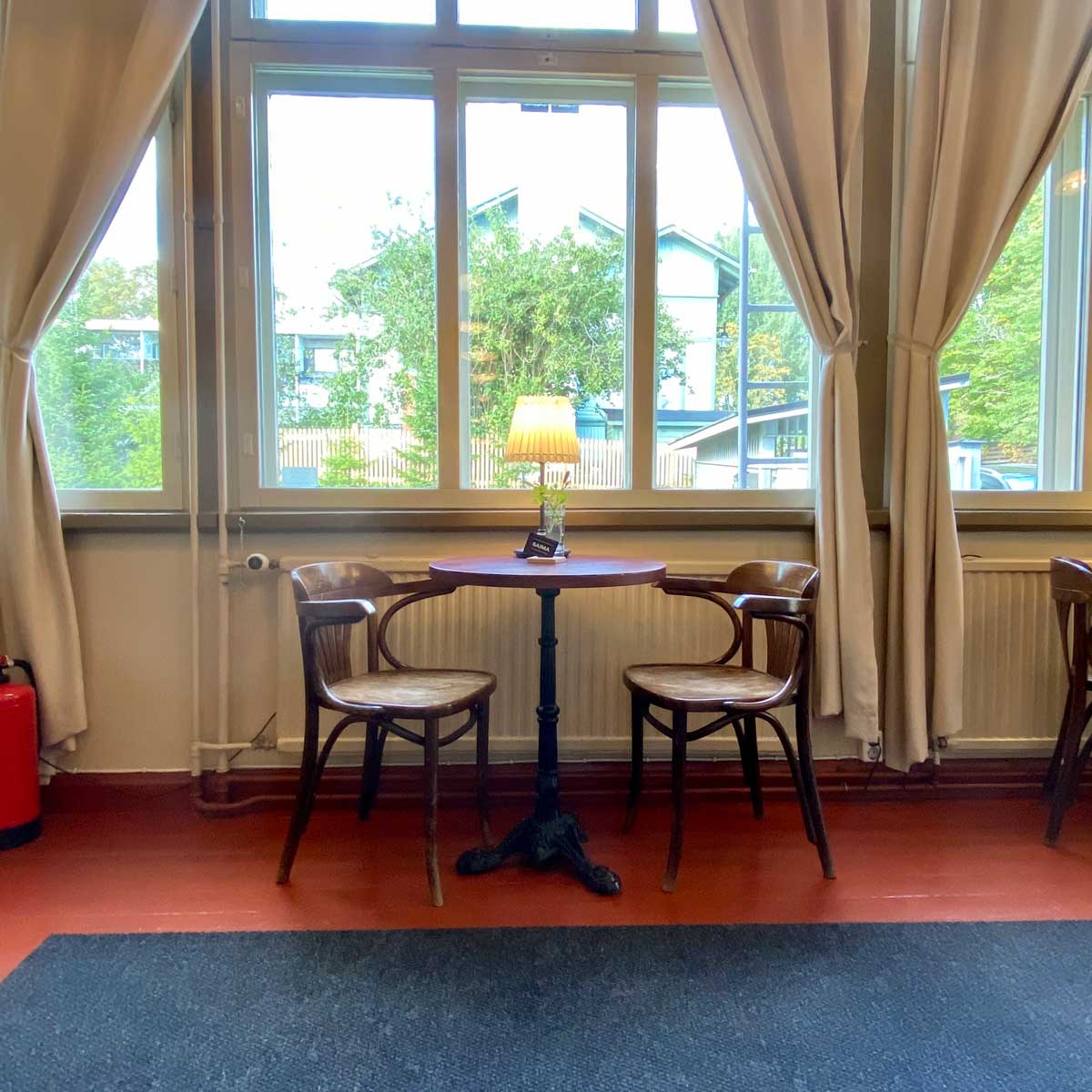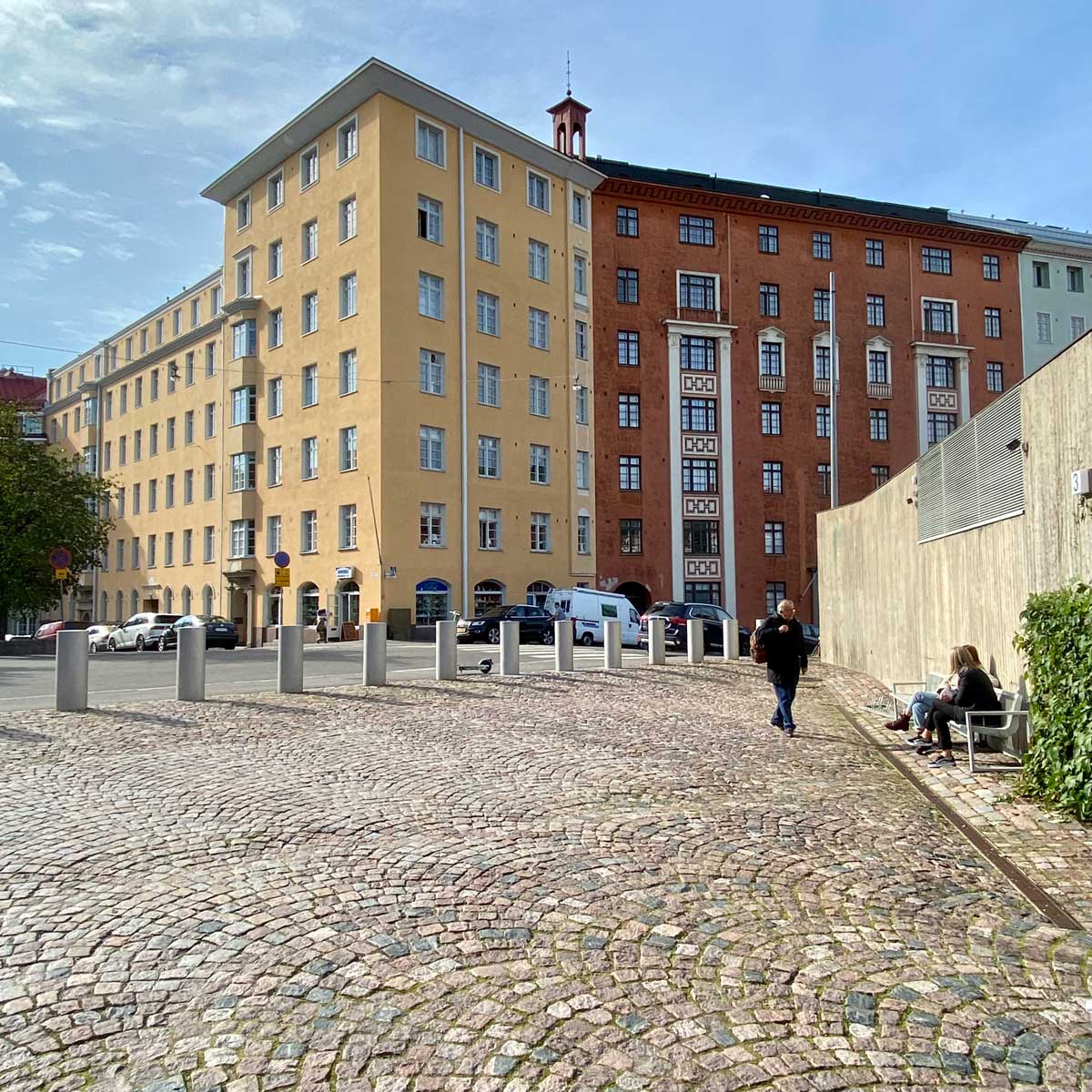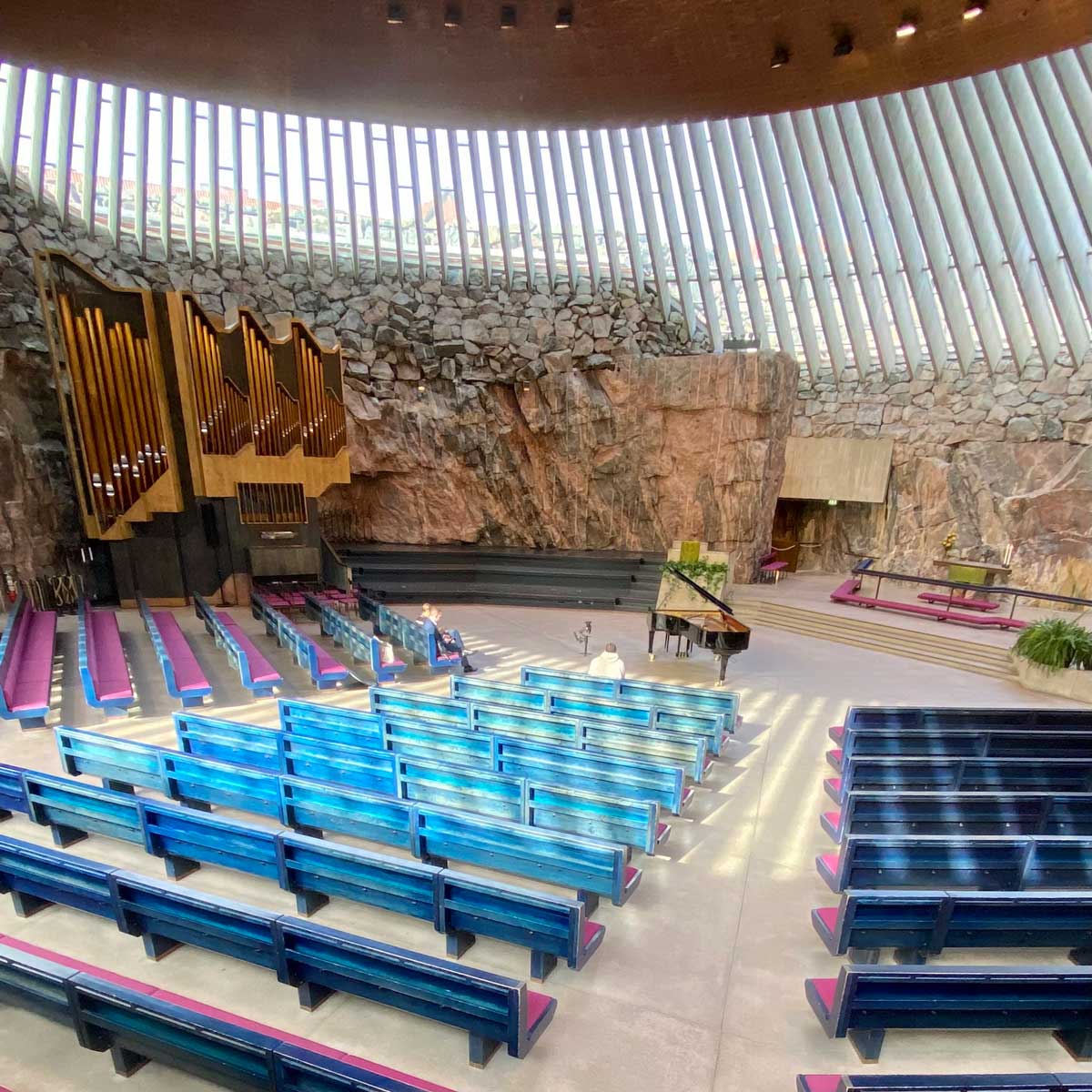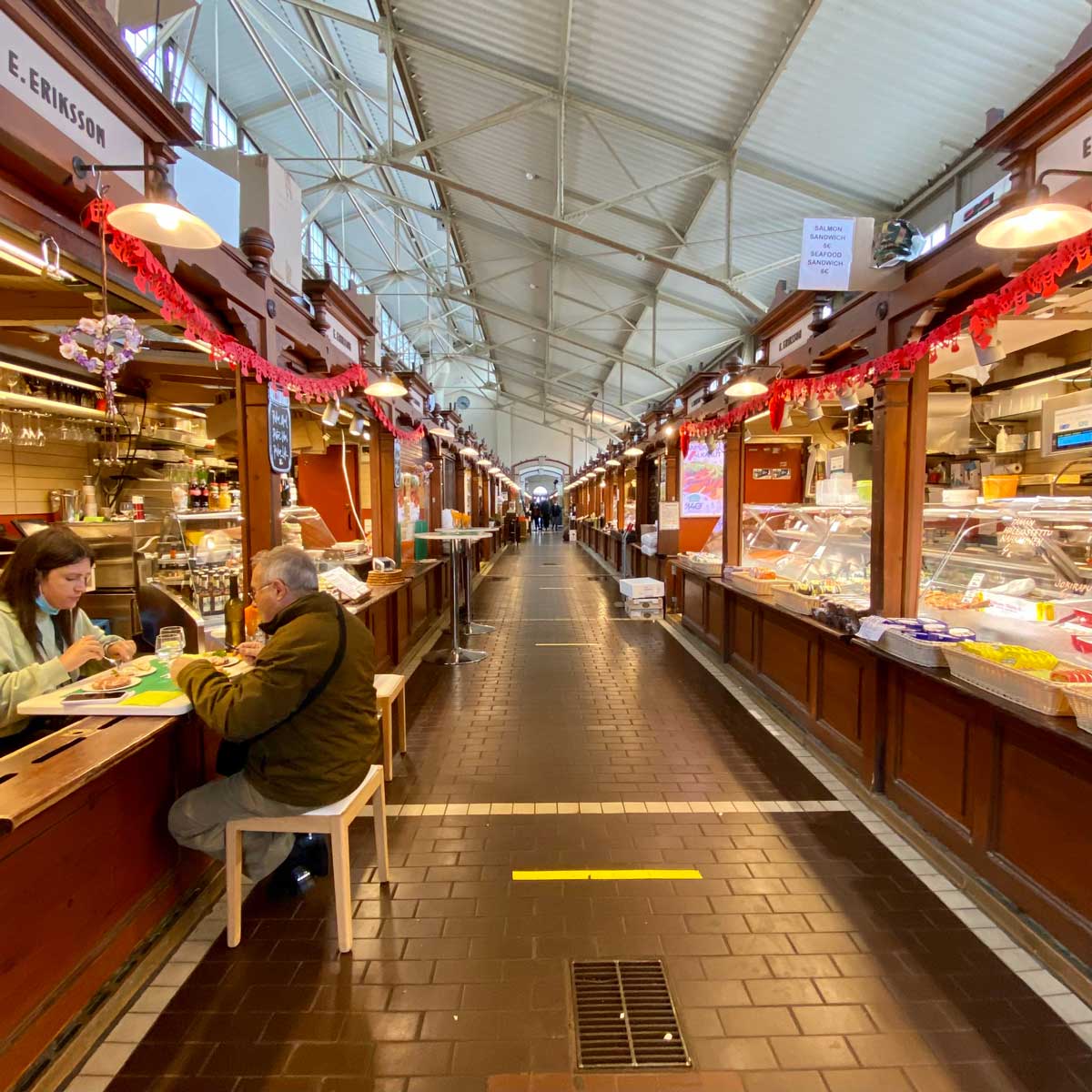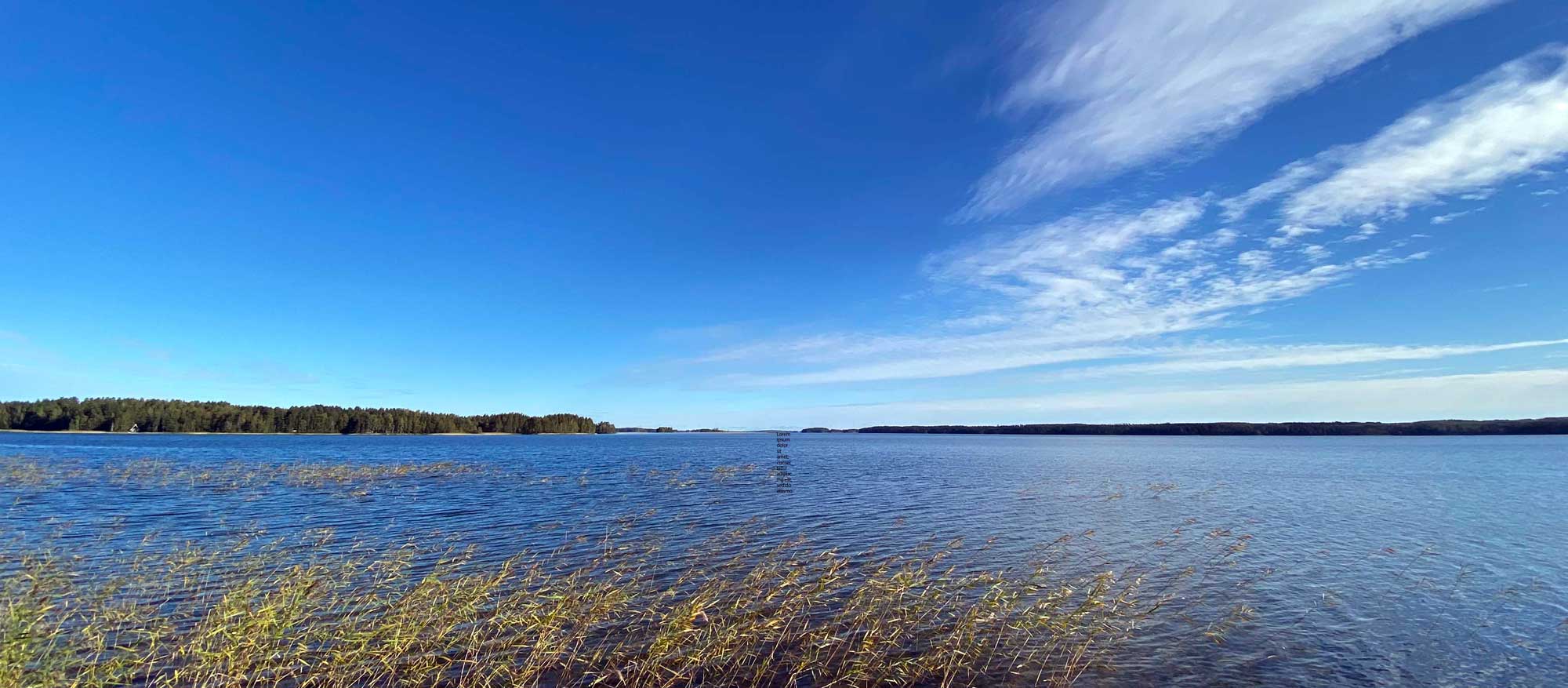A trip we wood like to do again
Memories from a short drive through the woods of Finland, small towns, and cities with a distinct history.
Day 1 – Tuesday: Leaving Helsinki airport in our rented BMW after landing yesterday was easy. We just followed the E18 westwards towards Espoo and Turku and turned off at exit 23 down road number 25 in the direction of Tammisaari. Roads are good and I just had to stay alert not to get a speeding ticket. We arrived in Tammisaari, or Ekenäs in Swedish, after about 90 minutes of driving. We arrived in this quaint little town just before sunset, which has a population of 14,754 according to Wikipedia and where 81 percent have Swedish as their native tongue – as opposed to slightly more than five percent nationwide. Still, we had to converse in English as most people didn’t understand Norwegian.
Ekenäs was once a small fishing village by the Baltic and has now turned into a picturesque and touristy town. However, as it is September and with Corona on the increase, we had the town to ourselves.
The street names in Ekenäs tell about village life in the past and how the townspeople got their livelihoods. The streets have been in the same place since the 16th century (founded in 1546). Hattmakaregatan (Hatmaker Street), Linvävaregatan (Linen weaver Street), Handskmakaregatan (Glovemaker Street), Garvaregatan (Tanner Street) and Smedsgatan (Blacksmith Street) tell us that Ekenäs was inhabited by skilled craftsmen.
Today there are still many craftsmen in Ekenäs, including shoemakers, watchmakers, furniture upholsterers and restaurateurs, carpenters, seamstresses and a framing shop. Ekenäs’ cosy bakeries and cafés are very popular, as are the market days on Wednesdays and Saturdays, especially in summer. The streets of the Old Town are still inhabited. You can carefully look over the fences to the gardens as you stroll on the narrow alleys. So called gossip mirrors, decorative gates and window ornaments in different designs are nice details to look at. At Christmas time, those walking around the old town can see a glimpse of a Christmas tree, an old, tiled stove, or a beautiful mirror door. At least, this is what the tourist brochures claim.
Day 2 – Wednesday: First thing this morning was a visit to the police station to hand in a purse we found in the park last night. It contained an ID card of a young women, bank card and cash in Euros and Thai baht. Hopefully the owner will be found.
Thereafter we were on our way to another quaint old town of wooden houses. Naantali, two hours away, is known for its proximity of both Turku, the region's administrative centre and largest city, and of the archipelago both contribute to the area's popularity with tourists. We were hoping to have a Thali dish with nan for lunch (pun intended) but spent the time visiting the church and the (very) quiet streets of the old town. Other points of interest in the town include Moomin World, a theme park on the island of Kailo, based on the books by Tove Jansson, the famous Finnish lesbian writer and artist. But as summer season is already over, we saved the 30 euros entrance fee.
So, we continued on to Turku, the second city of Finland, where we spent most of the afternoon was spent at Luostarinmäki Handicrafts Museum, Turku was hit by a great fire in 1827, and most of the city was left in ashes save for the village of Luostarinmäki. Mostly because it was more than a stone’s throw away and was protected by a big rock with no trees. The village was however deemed a fire hazard, but for some reasons it was never torn down as originally planned, and early 20th century voices appeared to preserve the area.
Today it is set up as a handicraft museum, showing how people in various trades worked and lived. There is a house for a watchmaker, bookbinder, bricklayer, violin maker, cigar maker, wigmaker, barber, shoemaker, and a host of other trades. Some of these trades had higher status than today and some of the tradesmen were wealthy. There’s even a post office where you can buy postcard and stamps and have them sent away with a special stamp.
Even though the museum opened in 1942, it wasn’t until 1982 that the last inhabitant passed away and the whole area was finally turned into a proper museum.
Walking through these old wooden houses, the furniture and the smell reminded me of my visits to my own great grandmother in the mid-nineteen fifties. The cooking was done by wood fire, wool-carders worked and slept in the same room, and so did tailors and other craftsmen.
Day 3 – Thursday: For being neither very religious nor spiritual, I find myself often attracted to religious buildings when travelling, especially churches or mosques with either modern architecture or lavishly artistic decoration. Saint Henry’s Ecumenical Church outside of Turku looks like Noah’s Ark turned upside down. An astonishingly simple masterpiece of architecture by Matti Sanaksenaho, the architect, the minimalist appearance indicates a sacral nature of both intimacy and grandeur.
More religion at display is to be seen at the Turku cathedral, one of the oldest buildings in the city. The same can be said about the castle, which dates to the late 13th century, standing by the banks where the Aura River meets the sea. The construction of the castle began when this part of Finland was joined to the Kingdom of Sweden. Through all the ages the castle functioned as a defensive fortress, luxurious residential palace, administrative centre, prison, granary, and garrison. Today it’s an extensive museum, and you need at least four hours to stroll through all the exhibits and in one way or other try to understand the history of the castle as well as the history of Finland.
Day 4 –Friday: After a couple of hours driving from Turku to Tampere with impatient Finns behind the wheel, all too eager to overtake me at every bend, visiting a church is the perfect idea for calming down. Tuomiokirkko, or the Tampere Cathedral, is a Lutheran church and the seat of the Diocese of Tampere, the second largest city in Finland. It was designed in the national romantic style and erected early in the 1900s.
The cathedral is famous for its frescoes painted by the symbolist Hugo Simberg between 1905 and 1906. The paintings aroused considerable adverse criticism in their time. Of particular controversy was Simberg's painting of a winged serpent on a red background in the highest point of the ceiling, which some contemporaries interpreted as a symbol of sin and corruption.
The Vapriikki Museum Centre is a cluster of museums by the river operating in the old factory premises of Tampella, in Tampere, Finland. The name Vapriikki derives from the Swedish word fabrik, meaning factory. On display is a multitude of exhibits, but particularly interesting is the history of Tampere. From what I understood Tampere was the centre of the civil war that erupted after Finland gained independence from Russia in December 1917. The fight was between the Reds and the Whites, and the communist Red was defeated by April 1918. 2000 lives were lost in Tampere alone. Since it was Friday afternoon, entry was gratis — no Euros to be paid.
A further twenty minutes’ walk up the road is the Amuri neighbourhood. Starting from the 19th century, Amuri was originally mainly a residential area for the working class. It consisted of blocks of wooden houses builttogether, which were replaced by low-rise apartments in the 1970s and 1980s. The older worker apartments in Amuri typically had shared kitchens, with two or four families sharing a kitchen together. One block has been preserved as a museum, well worth a visit.
Every Finnish town seem to have a market hall, or Kauppahalli as it is called in Finnish. Usually located in their city centre and constructed at the end of the 19th century or beginning of 20th century, at the time Finland was part of – or occupied by – Russia. While the original marketplace most likely sold local produce like meat, vegetables, poultry, bread, and other merchandise, today the Kauppahalli also have cafes and eating places and serves just as much as a food court.
The Turku Market Hall was opened to public in the centre of Turku in 1896 and it is the second oldest in Finland. Besides offering a wide selection of delicacies, the building itself is also worth visiting. It is a gem of Finnish building tradition and a highly valuable cultural historical site.
The Tampere Market Hall opened in 1901 and is located in a gorgeous art nouveau building. With its 30 vendors, the Market Hall offers everything from fresh fish and produce to cheese, pastries and local delicacies. It is visited by housewives and businessmen alike.
Day 5 – Saturday: Jyväskylä in central Finland is the home of the world-famous architect and designer Alvar Aalto. Besides numerous buildings designed by him in the area, he even designed his own museum which opened in 1973 — a few years before he died. Unfortunately, the museum is undergoing a renovation and will open again in 2023. So much for that. All we got to do was taking a picture of the exterior.
No more luck at the Säynätsalon Town Hall a mere 17 kilometres south of Jyväskylä, which was his first red brick building that opened in 1952. We arrived fifteen minutes after closing time but were allowed a two-minute peek into the small municipal council chamber.
On our way to Jyväskylä from Tampere this Saturday morning we made a detour to the village of Petäjävesi to look at the 200-year-old wooden church, a UNESCO World Heritage Treasure. But I hadn’t done my homework properly, as it was closed for season four days ago only to open again in May 2022. All we could do was to take some pictures of the exterior or of the interior through the dirty windows before continuing our journey.
Not our lucky day.
Day 6 – September: Deep in the middle of a Finnish forest, on an island in one of the thousand lakes, close to the Russian border, lies the small town of Savonlinna. Famous for the castle of St. Olav, or Olavinlinna as it is called in Finnish. It is named after the ruthless Norwegian bandit king Olav II, the one who christened Norway with force and who fell at the battle of Stiklestad on 29th of July 1030. 29th of July is also the birthday of the city of Savonlinna (population 20,000).
The fortress was founded by the Danish knight Erik Axelsson Tott in 1475 under the name Sankt Olofsborg in an effort to profit from the political turmoil following Ivan the third’s conquest of the Novgorod Republic. It’s set in the historical province of Savonia, in the Saimaa Lake area, so as to lay claim to the Russian side of the border established by the Treaty of Nöteborg. According to the treaty the border ran right through the lake.
A tour (by yourself) around the castle takes you 35 minutes crawling through narrow and dark corridors to view chapel, conference rooms and a view of the lake. As elsewhere in Finland, reduced rates for students, senior citizens, and unemployed individuals.
As it’s out of season already, almost everything is closed, and for dinner there’s only two restaurants to choose from, one being Zhong Guo Long. In the season the town comes alive with all hotels and restaurants open and three wooden “steamers” plying the lakes for sightseeing. We are staying at a small hotel with only five rooms called Lossiranta. Right by the lake shore with a view to the castle.
Day 7 – Monday: Visiting outside the tourist season (which in Finland ends August 15) has its pros and cons. The drawback is that many sites are closed, but on the plus side you will have the sites that stay open to yourself.
The Temppeliaukion kirkko is a Lutheran church, just a short stroll from our hotel in Helsinki. Built directly into solid rock, and also known as the Rock Church, a perfect place for contemplation after a heavy Nordic breakfast. Visited by hordes of tourists every year, now that the colder weather has set in on the Finnish capital, almost empty save for a film team doing a documentary on the pianist Mackenzie Melemed, a US born prodigy now living in Finland. He was playing the piano while the cinematographer was playing around with his camera.
The interior was excavated and built directly out of solid rock and is bathed in natural light which enters through the skylight surrounding the centre copper dome. The church is famous for its concerts, and its acoustic quality created by the rough, virtually unworked rock surfaces.
The church is set in a nice residential neighbourhood with lots of splendid Art Deco buildings. To finish off (no pun) our spiritual tour on this last day in Finland we also paid a visit to the Töölö church as well as the Helsingin Tuomiokirkko – better known as Helsinki cathedral.
After completing all our religious visits, it was time for yet another Kauppahalli, this time with Vietnamese Poh for lunch and with coffee and cake at Roberto’s Coffee on the Esplanade afterwards. And our last supper: Arctic char at the quaint but friendly Kuukuu Ravintola. Worth a visit.
[September 2021]

